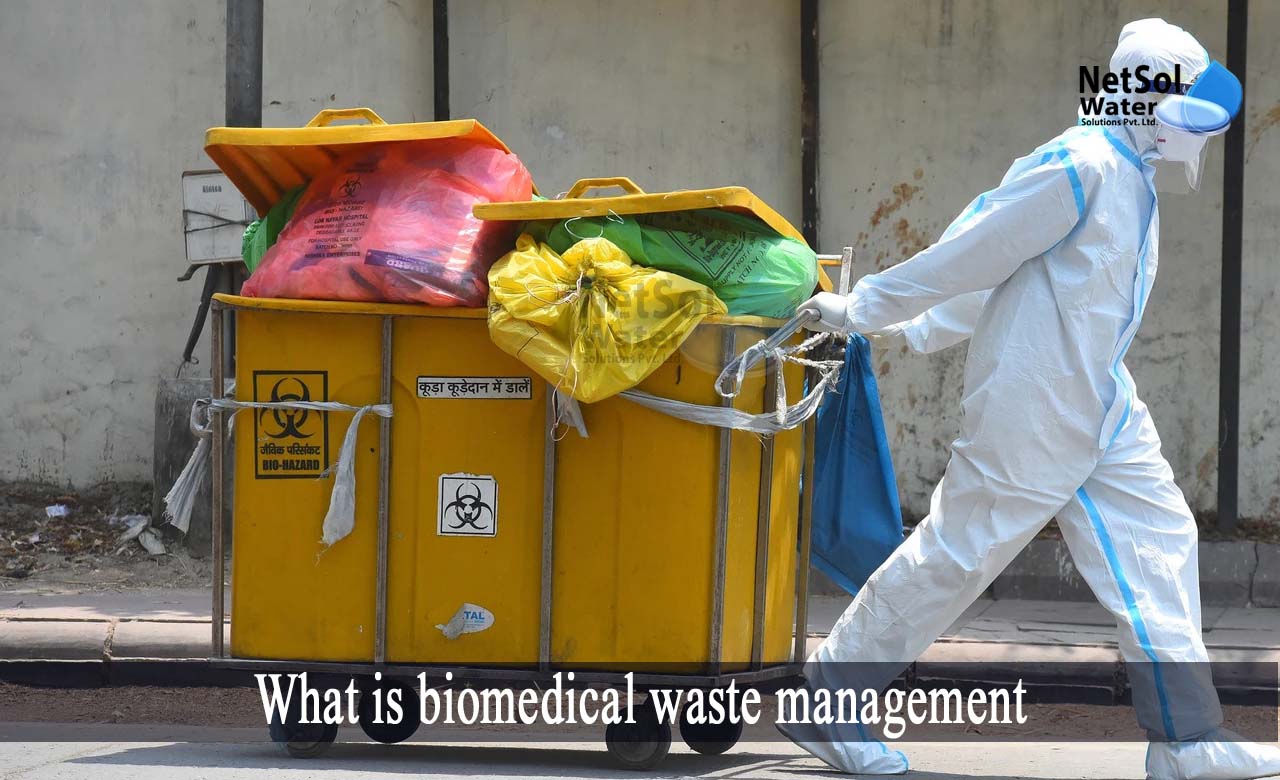Biomedical waste is any waste generated during human or animal research operations, such as diagnosis, treatment, or immunization. It takes a cradle-to-grave strategy to biomedical waste classification, quantification, segregation, storage, transportation, and treatment.
Any facility where biomedical waste is treated, disposed of is referred to as biomedical waste treatment and disposal facility.
What is Biomedical Waste Management?
Biomedical waste management has a huge influence because the waste can harm people's health, and have major consequences for those who come into contact with it. Segregation, storage, and safe disposal of waste are critical components, of good biomedical waste management in the workplace.
Biomedical Waste Separation
Waste segregation is critical for improved biomedical waste management. It is critical to reduce the volume of infectious waste, or else the quantity of waste will exceed management's capacity.
The waste is divided using the color-coding scheme of waste containers described below:
- Red bag: Contaminated recyclable waste such as bottles, intravenous tubes, catheters, urine bags, syringes, and gloves.
- Yellow bag: Human and animal anatomical waste, soiled waste such as dressings, plaster casts, cotton swabs, expired or discarded medicines, chemical waste (liquid), rejected linen, mattresses, beddings infected with blood or body fluid, microbiology, biotechnology, and other medical laboratory waste.
- White bag: Sharps waste, such as needles, scalpels, blades, or any other contaminated sharp instrument, which could cause puncture or wounds.
- Blue bag: Metallic body implants and glassware like pharmaceutical vials and ampoules.
Treatment of Biomedical Waste
Biomedical waste treatment refers to the processes used to eliminate the waste's detrimental effects. There are several treatment solutions that maximize waste management and disposal safety.
It also lessens environmental risks. The most common procedures for managing and cleaning biological wastesinclude, incineration, autoclaving, irradiation, and chemical treatments.
· Incineration
It is a waste treatment method that converts pathological and pharmaceutical waste into ash, flue gases, and heat. The operating temperature for incineration should be between 800 and 1400 degrees Celsius. It minimizes the bulk of waste by 90-95%, reducing the detrimental effects on the environment.
· Autoclaving
It is a steam sterilization procedure that is the most commonly used alternative to cremation. For 20-30 minutes, autoclaving requires a temperature of 121 degrees Celsius, and a pressure of around 15 pounds per square inch (psi).
This action is utilized to inactivate infectious pathogens and sanitize clinical service equipment. It is less priced and has no known health consequences.
· Treatment with chemicals
This procedure is routinely used to disinfect liquid waste before disposing of it nearby. It employs a variety of processes, including oxidation, reduction, precipitation, and pH neutralization, to convert waste into less hazardous compounds. Depending on waste type, chlorine or, sodium hydroxide, and calcium oxide can be used.
· Irradiation
These technologies, which include gamma, electron-beam, ultraviolet, and X-rays, are being used in waste treatment procedures. Irradiation sterilizes waste in a sealed room by exposing it to radioactive cobalt-60, which emits gamma rays that kills microorganisms.
It is quite expensive in comparison to other technologies, and precautions must be made to protect personnel from the harmful effects of radiations, such as cancer, radiation sickness, or even death.
Biomedical Waste Disposal
Land disposal is typically used for waste clean-up after it has been decontaminated, using appropriate treatment methods.
Landfilling should take place in areas with low groundwater levels and far from flooding sources. Every state and municipal government has its own set of rules and regulations, regarding the disposal of sterilized waste.
Conclusion
Biomedical waste management should be a collaborative effort with committed government support, worthy practices tracked by health-care personnel, regular monitoring of BMW practices, and tenacious legislation.
It is a fundamental human right to live in a clean and safe environment.
How can we assist?
Netsol Water is devoted to solid waste disposal that is both safe and responsible. To do this, we provide a wide range of modern solutions, including solid waste management, wastewater treatment, sewage treatment, effluent treatment, and much more.
We also educate our clients on how to avoid pollution by taking a sustainable strategy, and utilizing advanced treatment methods. For additional information, contact our environmental experts at +91 9650608473 or via email at enquiry@netsolwater.com



